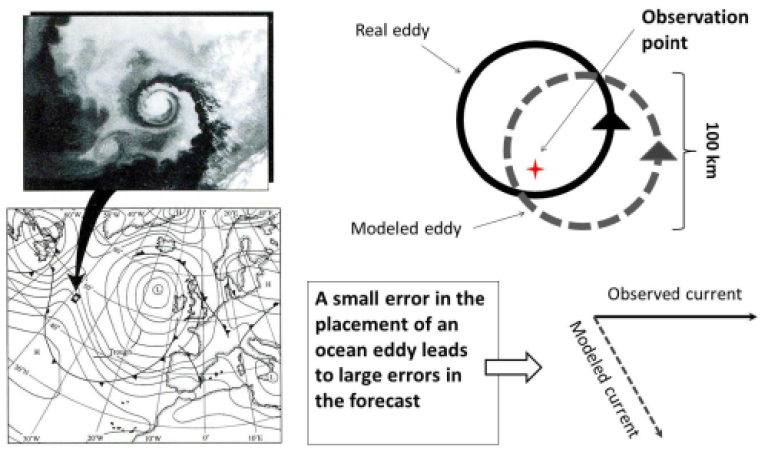Modern numerical circulation models are sophisticated, and have good representations of the physical processes that drive the ocean circulation. The ocean currents are highly variable on short temporal and spatial scales, however, and small deviations in the models quickly develop into large errors. The models can be corrected using observations, but unfortunately there is a lack of direct observations of the ocean circulation, hence the predictions are often associated with large uncertainties (see illustration below).

Model ensembles, that is, many simultaneous model simulations with slightly different forcing and initial conditions, can be used to quantify the uncertainties. Large spread between the different simulations indicate large uncertainty and vice versa. Today's numerical models are computationally demanding, however, and in practice the number of simulations in the ensemble is often too small.
In this project, we will make ensembles with thousands of simultaneous simulations, using simplified ocean circulation models and advanced supercomputing techniques. Such ensembles enable us to create more robust uncertainty estimates, and also provide information about the physical processes that dominate the uncertainties. Very large ensembles can also greatly benefit from observations. We can pick and choose those simulations that are dynamically consistent with the few observations that are available, hence we obtain more accurate predictions of the drift.

